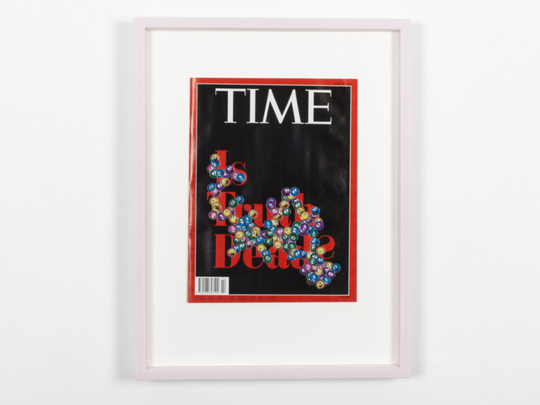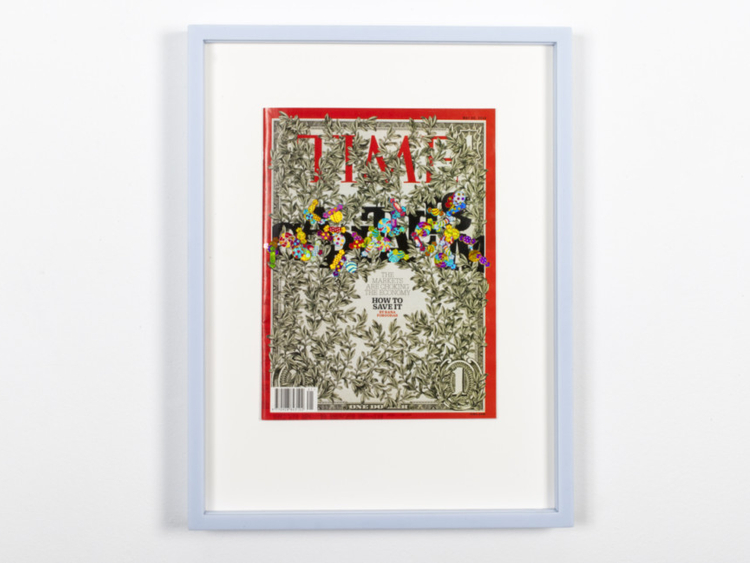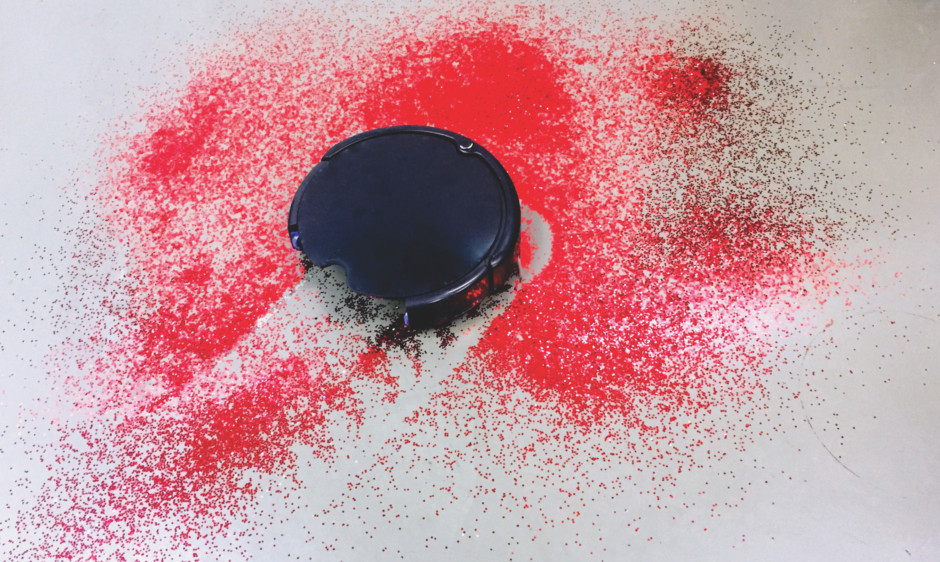
In a world flooded with fake news and alternative facts, Turkish duo Yasemin Baydar and Birol Demir, known as :mentalKLINIK, are seeking the truth about truth in their latest exhibition in Dubai, Truish. The Brussels-based artists are presenting artworks that playfully challenge our notions and perceptions of the truth and question what the truth is and how the truthfulness of something can be gauged. The smooth, shiny artworks are designed to look like the screens through which we get our information (or misinformation) in this digital age. They comment on the effects of capitalism, consumerism and the invisible politics and dynamics that influence our daily lives, highlighting the anxieties caused by the ambiguous realities we deal with every day.
“The Oxford dictionary’s choice of ‘post-truth’ as the word of the year reflects the times we are living in. Manipulation of the truth and of people’s emotions and thinking is such a huge element of our existence today that people cannot believe any facts and have lost faith in the truth. The word ‘truish’ describes this blurred reality,” Baydar says.
The artworks in the show embody this ambiguity. They appear to be simple and playful, but there are layers of meanings encoded in the materials, the compositions and the way viewers interact with them.
According to the artists the idea for this show was triggered by a Time magazine edition with the words ‘Is Truth Dead’ on the cover. They embellished this cover with cheap stickers of emojis and cartoon characters and enclosed it in a candy-coloured frame. This was the beginning of a witty ongoing series titled, Some-Time, featuring selected Time magazine covers about capitalism, Donald Trump’s election, mental depression, and other relevant socio-political issues. Through the shiny decorations that highlight or hide certain words and people from the covers, the artists have manipulated, embellished and personalised the information expressing their distrust of the media in an innocent, childlike manner.
In another series, Self-Seeking Superficials, the artists have layered pieces of brightly-coloured polyester solar films on ultra-clear tempered glass to create minimalist paintings.
“Like the shiny stickers in Some-Time, the shiny solar films, whose function is to block the sun are also an ideological material alluding to the superficial sheen of capitalism. People think that they are hidden by the solar films used in buildings, but viewers can see that every layer is visible in our paintings, along with their own distorted reflections. This is a reminder that in this age of surveillance we are being constantly watched and human beings are being ‘datafied’ making it easier to manipulate them,” Baydar says.
The same dichroic micro-layered polyester solar films have been embedded into circular clear glass to create the series, Phony. As viewers move around these works the colours change and even disappear at one point, reflecting the fickleness of the truth in this digital age. The manipulation is more obvious in the Chromatic Madness series, where the artists have physically crushed, rolled and flattened sheets of the film to create sculptural works that change with the light and the movement around them, once again conveying what a slippery slope the truth is.
A flashy neon sign featuring the words ‘Are You Popular Enough’ in the handwriting of both artists taps into the anxieties that people deal with in a digital, post-truth world. The work comments on the compulsion and insatiable desire of people to be liked on social media, while also highlighting how ephemeral and fake this popularity is.
The show also includes an installation, Puff Out, and a video titled, Whiff. The installation features glittering multi-coloured sequins spread across the floor of the gallery and several vacuum cleaning robots moving around autonomously across the floor, sucking up the sequins and ejecting them elsewhere to create changing patterns on the floor.
Visitors to the gallery become a part of the performance as they walk around the robots. This work represents a blurring of the space between art and the audience, between robots and human beings, and between our fear of machines and our growing dependence on them. The participation of the machines and visitors in the creation of the ever-changing patterns on the floor alludes to the many possible readings of the truth in a post-truth world, and the way every individual chooses to navigate these.
The video shows a soothing visual of confetti falling from the sky, shot with a high-speed camera. “This type of camera shoots 1500 images in one second. For us, it is an ideological material because it was invented for ballistics photography, and is now used for shooting advertisements. Confetti is connected to celebration and with this therapeutic visual we want to celebrate the end of capitalism and the beginning of healing of the anxiety and depression caused by it,” Baydar says.
Jyoti Kalsi is an arts-enthusiast based in Dubai.
Truish will run at Gallery Isabelle Van Den Eynde until December 30.















